Tags
"Externship"
Public Citizen Litigation: Elaine Andersen, Winter Shadow 2016
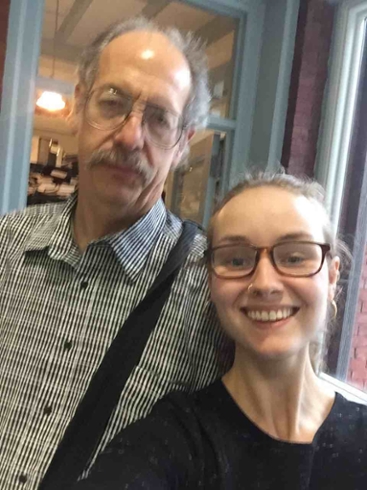
On a drizzly morning, the streets were dotted with umbrellas and suit-clad business people desperately holding newspapers above their heads. I realized I wasn’t in Portland anymore. Contra Portland’s laid back, “quirky” vibes, our nation’s capital buzzes with a different energy. The city teems with activity, as the foremost legal and political minds in the country face off daily.
I arrived in DC in early January to spend a week shadowing Paul Levy, a lawyer at Public Citizen. Within the small and highly collaborative litigation group at Public Citizen—a nonprofit whose stated goal is to champion citizen interests before Congress and the Courts—Paul specializes in first amendment, and more specifically internet speech, law, often representing anonymous clients.
I didn’t know what exactly I would be doing prior to my arrival at Citizen. Paul let me know that his caseload is unpredictable and I should come, not prepared for any particular thing, but for anything. Further, I would be working with another intern, Kendra, a 3L at Harvard Law School.
Continue reading Public Citizen Litigation: Elaine Andersen, Winter Shadow 2016
Oregon State Bar: Aliana Knoepfler, Winter Shadow 2016
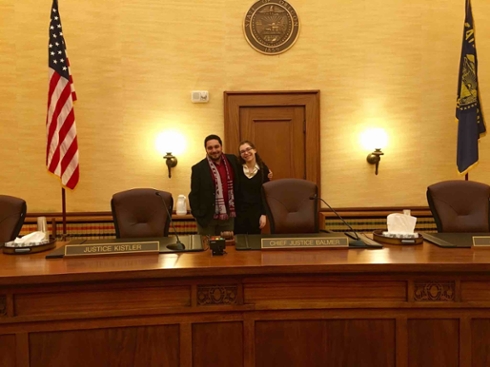
This January I was able to spend three days shadowing Amber Hollister, the General Counsel at the Oregon State Bar. I went into the experience with a strong interest in the connection between law and ethics, but actually knowing very little about how the rules that govern lawyers play out in real life.
On the first day of the shadow, I was able to learn about the role of the disciplinary counsel at the Bar and about the process that occurs when somebody files an ethics complaint against the lawyer. During the next two days, I was able to see how these ethics rules get put into practice. I met with law students, lawyers, and even judges, which was an invaluable opportunity.
One of the most meaningful parts of my winter shadow experience was being able to meet Multnomah County Circuit Court Judge Adrienne Nelson and sit in on one of her court proceedings. Afterwards, she generously met with us and discussed her own experiences as a judge and a lawyer. I also had the honor of meeting United States District Court Judge Michael Simon and Oregon Court of Appeals Judge Christopher Garrett, who both went out of their way to answer our questions and share their experiences with us.
Continue reading Oregon State Bar: Aliana Knoepfler, Winter Shadow 2016
Lumnicenter Lighting, Brazil: Nate MacFadden, Winter Shadow 2016

In January of 2016 I traveled to Curitiba, Brazil, for a winter shadow at Lumicenter Lighting, an LED lighting company. Immediately after leaving Boston on my plane to Brazil, I felt a mixture and excitement and anxiety: I did not speak Portuguese, had never been to South America, and was going to be doing some challenging engineering. However, as I met my host family I learned that my nerves were for naught. The family I stayed with was warm and inviting. They gave me some of the best home cooking I've had (somehow making healthy food taste really good), and showed me around like I was one of their close friends. They took me to beautiful parks, cities by the coast, drove by the tropical rain forest, went to excellent restaurants, and went go-carting. The most memorable meal for me there was at a churrascaria restaurant. It is a type of all-you-can-eat barbeque with every preparation of beef and pork you could want. I generally graze on food, eating many meals but always small in portions, but here I rarely said no when offered a cut of meat.
Once at the actual company, I was greeted by staff members with whom, once we learned how to get over the language barrier, we immediately started having fun and teasing each other, all while working on a better heating solution for a LED driver. The heat had to be reduced because the higher temperature an electrical component is, the shorter its lifetime. Even if the component is within its safe operating temperature range, being near the top of that range causes the product to break significantly earlier. Many methods were already tested so I had the challenge of coming up with new methods to hopefully be applied either in conjunction with the previous methods or by themselves. The staff made sure to give me feedback on my ideas and helped me every step of the prototyping way. They also knew that nobody could work on an empty stomach, so they introduced me to a snack called Paçoquita which I ended up loving. It was basically crushed nuts and sugar pressed into little cylinders and it was fantastic.
I'm going to miss everything from my trip: the people, the food, the weather, the work... I'll be sure to visit again soon.
Continue reading Lumnicenter Lighting, Brazil: Nate MacFadden, Winter Shadow 2016
Gloopen, Alec Kosik, Winter Shadow 2016
I spent two weeks of this past winter break engrossed in a shadow like no other. No, my winter shadow with Gloopen did not involve much shadowing at all in fact. Instead, founders of Gloopen, Arun Sagar and Ranjan Chaudhuri, challenged us externs to develop our own startup. More accurately, they asked us to start a startup. Though there remains much to be done before we can release our project onto a Reed server, it is awesome that we can even speak about doing so—in the sense that we are amazed at what we accomplished in two weeks and terrified what will come of our idea.
Terrified too of the legal quarrels looming over every startup’s head, about which we had several conversations that I found particularly enlightening. Luckily such quarrels may not be that relevant to our current project but just to have a general idea of things like the patent process, with all of its unspoken requirements (such as hiring someone to write the patent), makes me a little more confident in being able to play the game of startups.
On the technical side, Arun told us about emerging technologies as well as software histories. Because I began programming after many technologies had been created it is always revealing to hear how and why those technologies were created. For example, the conglomeration of HTML, CSS, and JS was not made all at once but rather was built upon over time as demands for dynamic webpages were solved with JavaScript (JS) and demands for style were addressed by Cascading Style Sheets (CSS).
Continue reading Gloopen, Alec Kosik, Winter Shadow 2016
MindBuck Media Book Publicity, Grace Fetterman, Winter Shadow 2016

I had the privilege of shadowing Jessica Glenn, founder of MindBuck Media Book Publicity. Jessica is dynamic, knowledgeable, and thoughtful. In her job, she devotes her boundless energy to promoting the work of creative minds.
I was so lucky that my time with Jessica coincided with the beginning stages of her dialogue with Blue Star Coloring, the leading publisher of grown-up coloring books. On an icy Tuesday afternoon, I accompanied Jessica on a meeting with Blue Star, where I observed the collaborative effort of a publicity campaign. After the meeting, Jessica had me write a sample press release for an adult coloring book titled, "It's Owl Good: An Adult Coloring Book." As a Reedie English major, I found this assignment to be quite a hoot.
The entire experience revealed many elements of a publishing niche, and the literary world at large.
Continue reading MindBuck Media Book Publicity, Grace Fetterman, Winter Shadow 2016
St. Paul's and the Church of the Parables, Reed Winter Externship Program, Meredith Mathis
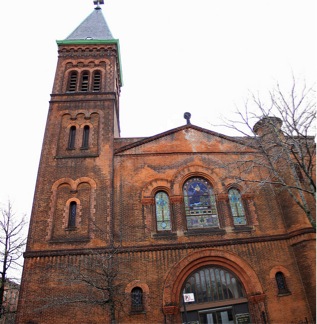
Meredith Mathis participated in a Reed Winter Externship, contributing to community services and support at St. Paul's and the Church of the Parables with Ben McKelahan.
The activities I did varied a good deal from day to day. One day I went to a clergy bible study and got a tour of a Senior Center at the St. James Matthew Emmanuel Lutheran Church, and went to a Mission Developer’s lunch (where pastors talked about their experiences and difficulties and offered each other support). Another day I met with a pastor and talked about the process of establishing a homeless respite bed program run by the Lutheran Church of the Messiah, met with the non-profit El Puente, and went to a church council meeting. I also got to sit in on meetings about planning future camp activities, walk around the neighborhood St. Paul’s is located in and check in with community members, go to the Metropolitan Museum of Art with a number of pastors and seminary students, work on an art project for an upcoming three kings celebration/community event, and attend Sunday service, a Three Kings party and parables.
One of the most engaging parts of this experience was discussing the respite bed program being developed (mentioned above). This respite bed program was intended to house homeless community members overnight in the church, but certain community members were against the program, and the church building had to be renovated before the city would let it run. A lot of what I got out of that experience is that bureaucracy and community disagreement will come up regardless of how good or necessary a program is. But for one, it’s good to realize that if I’m going to do community work of any kind, the city will always have jurisdiction over the physical spaces I’m trying to cultivate into community spaces or convert in times of crisis (this bed program was a response to crises of homeless individuals’ lives being put in danger because of the cold in New York), and there is no forcing a sense of urgency in other people even if their position on an issue is inflicting direct harm onto others. However, the conflicts that were being dealt with didn’t stop efforts to organize and make changes needed to get the program running eventually.
Continue reading St. Paul's and the Church of the Parables, Reed Winter Externship Program, Meredith Mathis
Method Design, Reed Winter Externship Program, Lexi Leonetti

Lexi Leonetti, junior English major, participated in a Reed winter externship. Read on for her reflections on her time at Method, an experience design firm.
For ten days this winter I had the opportunity to extern at Method under the sponsorship of David Lipkin ’91. David was a history major at Reed and founded Method in San Francisco some years after graduating. Today, Method has over 200 employees in three offices: SF, New York City, and London. Method has collaborated with a multitude of companies ranging from Lush Cosmetics to TED to Google. Their clean and intuitive designs are award-winning, but their work isn’t limited to design; I think placing them somewhere between branding and product consulting is probably the most accurate way to describe their role. Ultimately, it all depends on the specific needs of each client (and what Method finds that they need).
In an initial one-on-one meeting with David, he explained how the best consulting and design comes from finding that essential “thing” about a product or service. What purpose does it serve and why would people (ideally) want to use it? To determine that, Method has a talented team of astute and perspicacious collaborators who know how to think outside a traditional problem-solving process — because they understand that knowing the process has nothing to do with the outcomes. Often times people make a beautiful, substantial “solution,” but it doesn’t solve the right problem or fulfill the exact need. The analytical skills gained from being at Reed are essential to this part of Method’s approach; though Reedies don’t necessarily have the raw craft skills, we have the ability to assess problems and see how your answer can solve the right questions.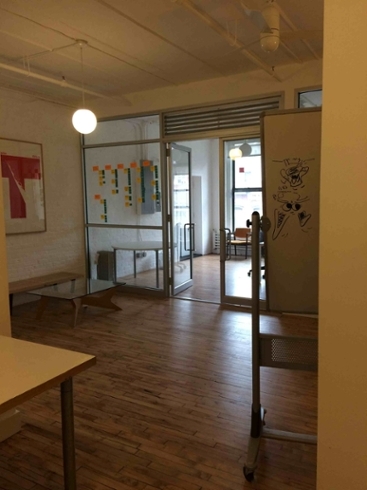
Over the course of ten days, I conducted research audits, prepared a presentation of those audits, collected stock photos to fit a presentation of a proposed user journey, participated in an all-day brainstorming session where we tracked several user journeys provided with every possible technological availability, and wrote an entirely new manifesto for the company Method was developing a proposal. This externship went beyond the concrete outcomes, though; simply being in the studio, becoming a temporary part of the team, and taking in all of the shared ideas and collaboration that’s so essential to Method’s work was just as significant as the rest of it. By hanging out, eating lunch at the studio, and striking up conversations with people over the studio’s Chemex coffee brewer (Stumptown was their roaster of choice, ironically enough) I got to hear how different people got to Method through their own unique career paths, as well as a feel for the industry as a whole, extending beyond Method.
Continue reading Method Design, Reed Winter Externship Program, Lexi Leonetti
Gregory Forman Family Law, Reed Externship Program, Aliana Knoepfler

Aliana Knoepfler, sophomore psychology major, participated in the Reed externship program. She spent her spring break learning hands-on about family law in Charleston, South Carolina.
This spring break I externed with family law attorney Gregory Forman in Charleston, South Carolina. Going into the externship, I was not sure what to expect as I knew very little about family law but was nevertheless very interested in learning as much as I could. I was specifically interested in what day-to-day life is like for a lawyer.
For a week, I observed Mr. Forman meet with clients, review documents, attend mediation, visit court and more. I was surprised to learn such a great deal about family law and also discover how interesting it is and how greatly it differs from other areas of law. In addition to learning about family law, I was also interested in learning more about law in general. Before this externship, I did not know about the option of becoming a sole practitioner rather than working at a law firm. I was able to learn that there are benefits to being a sole practitioner, such as more control over one’s career as well as more flexibility.
Continue reading Gregory Forman Family Law, Reed Externship Program, Aliana Knoepfler
Textbooks and the Oregon Coast: Winter Externship, Nathan Martin
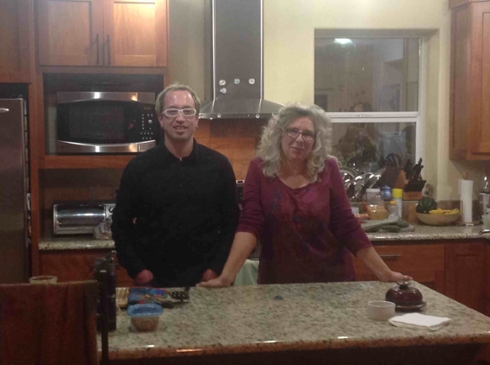
Nathan Martin, junior English major, participated in a winter externship on the Oregon coast with Ruth Werner, author. Nathan is also a recent winner of this summer’s President’s Summer Fellowship, to pursue poetry writing in the desert.
I'm used to textbooks. I've been buying them now for over four years.
I'll continue buying them for another one to three years, depending on
what I do after Reed. I don't think much about where these books come
from. I've cursed when the edition I need is a hundred dollars and the
previous edition is fifty cents. I've cursed louder after finding out
I could've used the older edition after buying the new one. I've also
been fond of textbooks. I had a history text at my community college
that surprised me with the effectiveness of its question and answer format. I do love books, but that love has never extended to textbooks. It still doesn't, but now I know a good deal more about where they come from.
format. I do love books, but that love has never extended to textbooks. It still doesn't, but now I know a good deal more about where they come from.
Continue reading Textbooks and the Oregon Coast: Winter Externship, Nathan Martin
Burns Photography Archive, Winter Externship Program, Ray Self
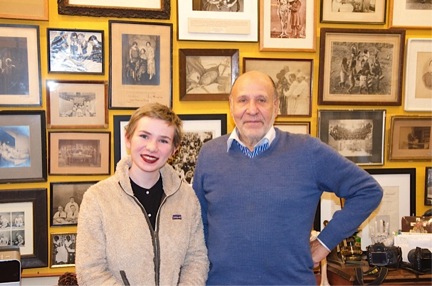
As a participant in Reed’s winter externship program, Ray Self, sophomore History major, spent eight days working in New York City at the Burns photography archive.
This winter break, I spent eight days working at the Burns Archive, a photographic archive in New York City that specializes in early medical photography, in addition to having a wide range of collections covering a variety of other historical topics. The Archive has provided photographs and historical information for a number of film and television projects, most notably working on the Knick, a Cinemax series set in a hospital at the beginning of the 20th century.
I had the opportunity to aid in a range of different projects during my externship. Most notably, I was able to see firsthand how the Archive organizes their image collections, and how these images are selected and prepared for publication in their series of photographic books on various historical and medical topics. Because of the immense quantity of images that the Archive possesses, I was curious to learn about the organizational systems they had in place to manage the collection. I was expecting a complex computerized database of images, and was surprised to see they utilized a very different organizational method. Boxes full of photographs were given a label related to their historical topic, and stored in a special room equipped with a digital camera for image capture. Images were organized in a way that was functional to current projects; as assignments arose, collected images related to that topic were documented via the camera and organized in a more comprehensive fashion.
Continue reading Burns Photography Archive, Winter Externship Program, Ray Self
Insights at Sigenics, Winter Externship, Edgar Perez
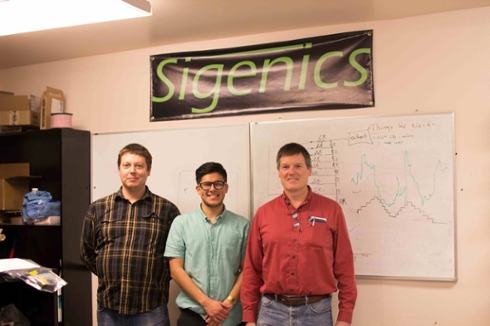
This winter, two fellow Reedies and I had an amazing experience working with Dr. Doulas Kerns and Mr. Marcus Snyder at Sigenics. Together, they provided an empowering three day externship and enlightening insights as to the life of electrical engineers. We started our trip with an hour long commute from the California coast to the base of Mt. San Antonio. Relieved from traffic by the carpool lane and good music, our trip to Sigenics was always pleasurable.
We spent our first day learning about the company and the different roles of scientists and engineers. Dr. Kerns started off with a small tour of their lab and showed us some of their designs. He really blew us away when he showed us the incredibly small size of their circuit designs and their circuit elements. A chip no bigger than 1 squared millimeter can house billions of transistors. As if hearing about this wasn’t enough, Dr. Kerns pulled out a sample of their work and placed it under and a powerful microscope. There is was. Mind-numbing in scale and constructed with jaw-dropping precision. Millions of components carefully embedded in a tiny silicon chip, and the chip: even more precisely designed. Yet here we were, three unexperienced undergrads sharing a room with the chip designers themselves!
The relationship between an engineer and a scientist was the next item on Dr. Kern’s agenda. Using a very Reed-esque analogy of a pizza shop, he demystified some of the quirks of engineering. The relationship between engineers and scientists is actually more symbiotic in nature than one would expect, he explained. Engineers use scientific results to develop tools for scientists. In turn, scientists use the tools to develop new results. This is relationship is a vertical growth pattern where the two fields help propel one another. Along the way, the tools and results produced by both parties will spread horizontally, manifesting themselves as new technologies or constructions for the benefit of our societies. We ended the day with a scientific investigation of the phenomena occurring “behind the scenes” in the electrical components we used the following day, and (appropriately) some delicious pizza from a local shop.
Continue reading Insights at Sigenics, Winter Externship, Edgar Perez
Sigenics Winter Externship, Farhanul Hasan
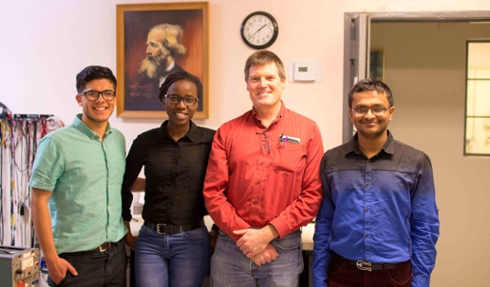
On the 11th of January, 2015, I landed in the Los Angeles international airport for a work experience opportunity that I had been looking forward to ever since my application was accepted. I was picked up by Edgar, who was also doing the externship, and Jackie (Edgar’s sister), whose generosity allowed us accommodations for the duration of the program. Jackie drove us to her house in Costa Mesa and Modi, another of the externs, came in later in the evening. We went out to grab dinner and buy groceries for the next few days.
Day 1: Jan 12
We woke up at around 6:30 and hit the road at 8:15. The traffic wasn’t nearly as bad as we expected and as a result, we reached Sierra Madre by 9:15. At the Halcyon building (which housed the Sigenics Lab), we were greeted by our sponsor, Dr. Douglas Kerns. We went inside the Sigenics lab and met Marcus Snyder, the office manager and senior technician. Douglas gave us a brief overview of the company and its goals. We learned that Sigenics specializes in designing integrated circuits (IC) and silicon wafers among their microelectronic components. Douglas also explained the science behind electronics and electric circuits. After learning these introductory ideas, we looked at a silicon wafer chip through an electron microscope, which was very exciting as we could actually see the arrangement of electrons that serve as the building blocks for all of electronics.
Continue reading Sigenics Winter Externship, Farhanul Hasan
An Unforgettable City: Winter Externship at Mary Howard Studio, Hannah Muellerleile

I wanted to extern with the Mary Howard Studio because as it is a set design studio, I figured I’d see my interests in graphic design, art and photography brought together in a hands-on, real-world way. And indeed I did. All three are expertly and creatively combined to make the magic and beauty one sees in magazines.
But wait, you may be wondering, what exactly is set design? The simplest way I can explain it is this: Mary Howard Studio is a set design studio that works in the fashion industry. So, in every glossy-paged fashion magazine there is the model in beautiful clothes looking effortlessly perfect, right? But there’s also the world behind that model. Mary Howard
Studio makes, designs and places every detail in the set behind that person.
Continue reading An Unforgettable City: Winter Externship at Mary Howard Studio, Hannah Muellerleile
Corey McPherson Nash, Robert Haas, Winter Externship

I just finished my externship at Corey McPherson Nash in Massachusetts, and had a great time. Their office is beautiful, which makes sense. Who would trust a branding and design agency with a boring office building? Even though I had no comparable skills, they were great hosts and included me in all the big business. I can't go into specifics, because "loose lips sink ships", but I got to participate in client meetings, conference calls, brainstorming sessions, and even throw my two cents in on a few design questions about websites and magazine spreads. All the work Corey McPherson Nash does is very impressive, but the most striking thing to me was how much everyone I interacted with enjoyed his or her job. Even if I'm unable to get into branding and design when I grow up, I could only hope to get half as much job satisfaction as them. I also appreciate having something to look at after the end of a day's work. Sometimes hard work will not produce anything substantive, and at that point I'd probably consider it unnecessary toil rather than useful work. Overall, my externship was a great experience and I would certainly do it again. I learned a lot.
Continue reading Corey McPherson Nash, Robert Haas, Winter Externship
Winter Externship with New Mexico Legal Aid
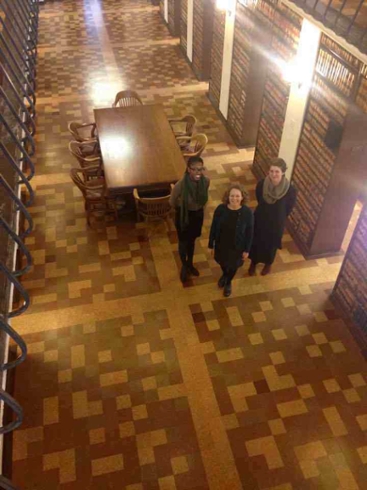
This January, I had the opportunity to spend a few days at New Mexico Legal Aid in Santa Fe. Hosted by alumna Amy Propps ’91, my time at NMLA was probably a bit of a crash-course in the legal aid world. My five days with New Mexico Legal Aid can be best described as a game of question and answer. New Mexico Legal Aid is a statewide public interest legal aid firm that provides free legal services for low-income people and communities throughout the state. Through their various branches located in various cities, they specialize in various types of civil law ranging from family law to property and housing to employment to everything else in between. Just from my short time there, I was able to gain a first hand look into the vast world of legal aid and into the mechanics of exactly what it is that attorneys actually get to do.
When I arrived in Santa Fe, I really had no idea what to expect—either from New Mexico itself or from my time at NMLA. My first time in New Mexico, I admittedly did not know very much about the state’s rich history (nor did I really understand how cold it gets during the winter months). I did, however, know a fair bit about law and the world of public interest law practice. What I didn’t fully know was exactly how diverse, complex, and complicated public interest law could be. Of course, when I got on the plane from Baltimore to Santa Fe, I had had a few hopes and expectations for my externship experience. Having had the longtime goal of attending law school and eventually going on to practice public interest law, the main thing that I wanted to gain from my time at NMLA was a comprehensive look into exactly what the world of public interest law looks like, what sorts of work I could potentially expect to do as an attorney later on, and what sorts of steps I could take to prepare for a life in this field.
When I first arrived in Santa Fe (about two hours later than I had originally planned due to one horrible windstorm over the Midwest and one delayed flight coming from Dallas), Amy and my host, Callie Dendrinos, were waiting for me at the tiny airport. From the get-go Amy and Callie were showing me around and filling me in on New Mexican history and culture.
Continue reading Winter Externship with New Mexico Legal Aid
Fall Externship with simon max hill '01
I learned in early September that simon max hill ‘01 was sponsoring an externship over fall break. After reading his interview on Works & Days, I knew I wanted to apply. I had just switched my major from biology to English, and I felt that I connected with simon on several levels with regards to his experience at Reed. I was very interested in his work in film and advertisement casting, and as someone interested in media and advertising, this felt like a logical next step.
Nine days later, I found myself lying in bed and checking my email before French class, when my sleepy eyes read the subject line, “Dan, meet simon, your fall externship sponsor. simon, Dan Pogust!” I was so incredibly thrilled for the learning opportunity ahead of me, that I accidentally made noises of excitement that startled my roommate.
I began my externship early, on Saturday October 18th, with Liz Vice, a freelance casting director who was helping simon cast extras for the movie Green Room. This process began by working five and a half hours contacting roughly one hundred extras via email, text, and repetitive phone calls. The whole process was an excellent lesson for me in casting extras, and an excellent introduction to the externship as a whole.
Continue reading Fall Externship with simon max hill '01
Reed Winter Externship Reflections 14: Number Eight, Cooke and Co, Ashley Brandt
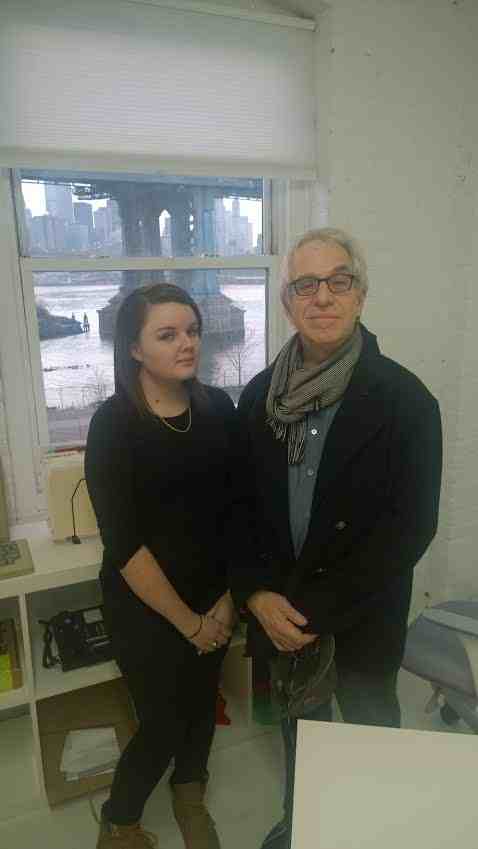
The camera pans across the office and lands on a young ingénue. She weaves between the various secretarial desks arranged in the large central space of the office, clutching a small box of personal possessions with which she will adorn her own desk. The men of Sterling Cooper gather around the perimeter to gawk at Peggy Olson, who is unaware that this will be her first day as Don Draper’s personal assistant--
Okay, so my externship experience was by no means analogous to Peggy Olson’s introductory scene in the premiere episode of AMC’s Mad Men. But it is approximately representative of my familiarity with advertising when I applied for a winter externship with Cooke & Co., a marketing start up located in Brooklyn, New York and founded by the supremely cool Steve Wax ’65. My existence is surprisingly divorced from the deluge of advertising media some people may experience. There are no commercial breaks on Netflix, I was an early adopter of AdBlock, and I couldn’t tell you the last time I picked up a physical piece of print media. Figuratively, I was Peggy Olson on her first day at Sterling Cooper, and literally, all that I knew of advertising was Peggy Olson’s character arch from secretary to senior copywriter.
I can tell you now that Cooke & Co. is nothing like Sterling Cooper, and modern marketing has come a long way since Don Draper. The scope of marketing has expanded from print, radio, and brief television commercials to websites, social media, and beyond. In many ways, advertising platforms are more accessible to brands than ever before, and perhaps as a result, the “market” is a bit saturated. Thus, the need for brands to differentiate both themselves and the ways in which they engage with their audiences has become extremely pronounced.
Reed Winter Externship Reflections 14: Number Seven, Montana City Hospital, Allison Ashby
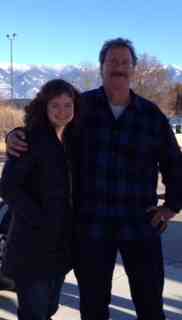
David Smirnow and his family are fabulous hosts. They let me stay in their home for five days while I shadowed different doctors including David at the city hospital. I was able to see the beautiful Montana landscape every morning on my way to "work" with David. I say "work" because I got to watch everything but did not actually have to do anything. After all I am not certified to cut someone open, not to mention it was too much fun to be called work. David was invaluable in setting up day for me to shadow in pathology, radiology, anesthesiology, and surgery. I had the opportunity to see cancerous cells under a microscope, bones and the womb through CT, MRI, and X-ray scans, brain surgery, and more. The doctors were friendly and full of information to help lead me along my path to medicine. I was also able to see an autopsy, which I admit was a little unnerving but very educational. It was like an anatomy class but more smelly. Overall, definitely an experience not to be forgotten!
Continue reading Reed Winter Externship Reflections 14: Number Seven, Montana City Hospital, Allison Ashby
Reed Winter Externship Reflections 14: Number Six, Frontier Data Corp, Sarah Brauner
It’s 4:30 on a Friday afternoon, and I’m sitting with my chair swiveled to the center of a room in “Silicon Alley”, New York City, in a recap-of-the-week meeting. Very quickly, lists of tasks completed and accounts secured turn into talk of what the next steps are, who the next clients are, and eventually, what the next ideas are. How should we design this particular feature of our app? How will we deal with the millions of people that lack addresses in the traditional sense? What kinds of services will our app be facilitating? Once our product is streamlined, how will the information seekers interact with the information finders? Should we buy up this domain name too, in case we expand the franchise in this direction?
I don’t know much about the business world, but it’s my understanding that CEOs don’t usually hash out ideas about the fundamental next steps of their company with low-level employees, let alone interns. And yet, here I am, on the last day of my two-week stint as an intern at Frontier Data Corp, not only listening, but actually being asked to participate in a company brainstorm alongside the CEO, CTO, CFO, and other employees who don’t yet have titles with acronyms. Of course, seeing as the company is 6 members strong (myself included) a meeting with only senior staff members might be somewhat lonely—but still, I can’t help but think how rare, how adrenalizing it is to get to play an active role in coloring what is now only the outline of an application with aspirations of becoming as big as TaskRabbit, Uber, maybe even Facebook. I remember reading an article in The New Yorker this summer about the infectiously optimistic attitude that is pervasive in Silicon Valley tech startups, and at the time, I rolled my eyes; it seemed to me unbelievably naïve and arrogant to think that the world’s problems could be solved by a bunch of programmers working in a bubble perhaps thicker than Reed’s.
Yet here I am, a more-cynical-than-average college student, in a city that is distinctly not warm and fuzzy, unable to shake this feeling of excitement, even hope, at the possibilities for the future. I can feel my future-self cringing.
Continue reading Reed Winter Externship Reflections 14: Number Six, Frontier Data Corp, Sarah Brauner
Reed Winter Externship Reflections 14: Number Four, Conquest Capital, Ahyan Panjwani
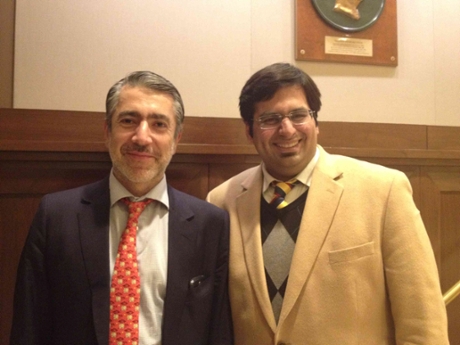
The heavens had already started to rumble and give the East Coast a hard time as I flew into NYC a few days after New Year. The first day of work I took the wrong bus and ended up walking 31 blocks down Madison Avenue. Although it wasn’t the most pleasing thing, it was an experience on its own – weaving my way through herds of humans that flock midtown Manhattan every morning. Seeing those skyscrapers tower above me, the financial powerhouses of the world, was an enthralling sight.
I strode into the Conquest Capital office and all I could hear was the buzz of CNBC market tickers signaling stocks, futures, currencies, commodities and what have you. Conquest is a hedge fund involved in trading futures and currencies based on signals from the mathematical mazes underlying their strategies. As a result, most of my work was based on grasping the very elements that make up a trading strategy. I was using a combination of MS Excel and Visual Basic (VBA) to build my model which revolved around what is called a “moving average” in the financial world.
Another part of this great experience was observing traders strike out deals and place orders depending on market conditions. The release of job numbers and retail industry figures for the holiday season coincided with the time I spent there, and I got to see Economics 201 (which I had taken in the fall semester before) at work. I got a real sense of market volatilities and how significantly market indicators can impact trades in S&P 500 and the world currency market.
